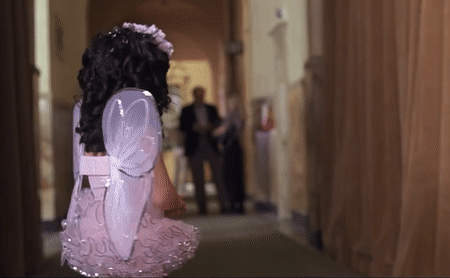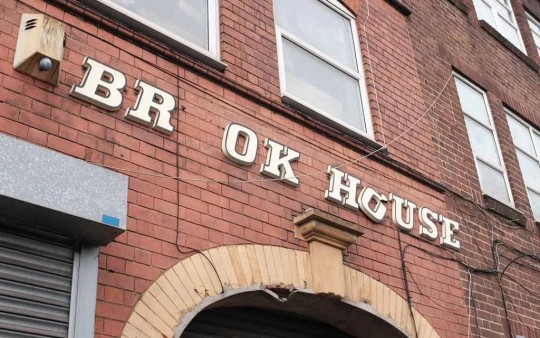#stymie
Explore tagged Tumblr posts
Text
stymie, v.
First attested in 1857, this word was originally a technical term used in golf. Its original meaning is "to block an opponent's path to the hole with one's own ball", from the noun stymie, which meant "a situation in which an opponent's ball blocks one's path to the hole".
The noun is attested from 1834, and is of uncertain origin. The most likely source is Scottish stymie, "a person with poor vision", which itself is from Scottish stime, meaning "the least bit", through the idiom "unable to see a stime". Stime is attested from the 14th century, and itself is of unknown origin.
The verb form of this word attains its general meaning of "to block, thwart, or hinder" by 1902.
7 notes
·
View notes
Text
can someone else run the Best Trolls of the 21st and 20th centuries tournament i don't want to do any work I just want to consult
47 notes
·
View notes
Text








#the little rascals#alfalfa#buckwheat#porky#Darla#stymie#Waldo#spanky#Travis Tedford#Bug Hall#Brittany Ashton Holmes#Kevin Jamal Woods#Zachary Mabry#Ross Bagley#90's#90's movies#Petey#elmer#Blake Ewing
30 notes
·
View notes
Video
tumblr
When traffic has been stopped for an hour due to road construction but you find all the workers doing this.
61 notes
·
View notes
Text
The situation with the other three proposals is worse because they stymie experimental adjudication even more definitively.
"The Fabric of the Cosmos" - Brian Greene
#book quote#the fabric of cosmos#brian greene#nonfiction#proposal#worse#stymie#experimental#adjudication#definitive
2 notes
·
View notes
Text

Stymie, with jockey Conn McCreary up, wears a blanket of gardenias while standing in the winner's circle after capturing the first running of the Empire City Gold Cup at Belmont Park, Elmont, July 19, 1947. Owner Ethel D. Jacobs and her husband, trainer Hirsch Jacobs, stand at right.
Photo: NJ.com
#vintage New York#1940s#Stymie#Conn McCreary#horse racing#Belmont Park#July 19#19 July#champion horse#horse#vintage horse racing#vintage NYC
17 notes
·
View notes
Text




youtube
All hail, the great Texas-bred, Stymie. Purchased for $1,500, he went on to be a champion and win $900K in 1940s money. Read about him here.
6 notes
·
View notes
Text

Light box
(fell free to use in stimbords but please credit)
#fy#neon aesthetic#neoncore#glow#gifs#gif#my gifs#stymie#visual stim#stim#stimboard#satisfying#fyp#original content
2 notes
·
View notes
Text

Thinking about the Coruscant subway system
#I sketched this at the same time as my other Star Wars illustration and then go totally stymied by the color#would all these people be riding public transport? no. come at me.#star wars#starwarsblr#padme amidala#bail organa#commander fox#mace windu#yoda#coruscant#star wars the clone wars#star wars prequels#excessive aurebesh#aurebesh
8K notes
·
View notes
Text
That mysterious font is Festive, not Stymie
By Ray Newman - April 22, 2024
Source: https://precastreinforced.co.uk/2024/04/22/that-mysterious-font-is-festive-not-stymie/

What is that font? You know, THAT font? The chunky italic lettering you see on launderettes and council blocks, on post-war churches and new town butcher’s shops, across the UK.
The font you’re thinking of might well be ‘Festive’, a lettering style designed by Maurice Ward of Ward & Co, a sign-making company in Bristol, founded in 1952.
Launched in the early 1960s, Ward’s ‘Inter-signs’ product, manufactured under the Lettercast brand, used injection moulding.
Lettersigns was available in two styles, Festive and Block, and made it possible for anyone to mount their own custom signs with professional-looking 3D lettering.
Or, of course, the specific sign you’re thinking of might be in one of any number of similar lettering styles in the broader category of ‘Egyptian italic’.

Samples of lettering styles similar to Festive cobbled together by me from various sources including The Studio Book of Alphabets, 1963.
Those include:
Egyptian Italic (an earlier Ward & Co style)
Festival Egyptian (an official style of the Festival of Britain)
Stymie Bold Italic
Clarendon Bold Italic
Profil
Amigo No. 1
First, then, let’s pin down how to spot Festive in particular.
How to spot Festive
Trade catalogues from Wards of Bristol include samples of Festive in print.
From this, we can see the most distinctive features of Festive, which can help us distinguish it from similar lettering styles in the wild.

A sample of Festive from a Ward’s catalogue from, I think, 1971.

A shop sign in Bristol in Festive, author’s own photo.
First, there’s the unexpected serif at the apex of the capital A.
Then there’s the relative flatness of the round letters, like C and G.
And, of course, there’s the built-in beading – that outer line that traces the edge of each letter.
The origins of Festive
There’s a clue right there in the name: like almost every bit of flair in Britain’s mid-20th century public spaces, it came indirectly from the 1951 Festival of Britain.
One of its official lettering styles was ‘Festival Egyptian’, as depicted in the typographic handbook for designers.

A page from A Specimen of Display Letters Designed for the Festival of Britain 1951 via Chris Mullen at The Visual Telling of Stories.
But why Egyptian? In around 1817, London type founder Vincent Figgins created a typeface he referred to as ‘Antique’.

An 1834 sample of an italic variation of Antique. SOURCE: archive.org
It was fat, bold and easy to read from a distance.
Earlier examples of this style have been found but Figgins commercialised it and prompted imitations from other foundries worldwide.
These days, they’re known as slab serif fonts but in the 19th century, they were usually referred to as antique, after Figgins; or as either Ionic or Egyptian, in variations on the theme.
You can certainly see in Antique, especially when italicised, the seeds of the 20th century launderette signs and tower block titling.
But these in-your-face, ungainly display typefaces went out of fashion, like everything associated with the Victorians. They spoke of slums, music halls and Gothic mausoleums. They weren’t fit for the world of motor cars, aeroplanes and Streamline Moderne.
Then, in the 1930s, a revival began, achieving its full flowering with the 1951 Festival of Britain. This is documented in detail by Paul Rennie in this 2001 essay (PDF) but here are the key points.
First, the cover of John Betjeman’s first book Ghastly Good Taste, published in 1933 when he was still in his twenties, showcased a jumble of Victorian typefaces.
Then, in 1938, came Nicolette Gray’s book Nineteenth Century Ornamented Typefaces, celebrating Victorian lettering styles.
And in the same year, the architect and townscape designer Gordon Cullen personally produced (non-italic) slab serif lettering for the starkly modern Finsbury Health Centre. It is clearly ahead of its time and wouldn’t look out of place on a municipal building erected 20 years later.

The Finsbury Health Centre in 1979. SOURCE: Gillfoto, via Wikimedia Commons, under a Creative Commons Attribution-Share Alike 3.0 Unported licence
Though the British Government generally clung to clean, uncluttered sans serif typefaces such as Gill Sans for official posters (Keep Calm and Carry On, chaps) advertising designers and publishers dabbled in Victorian styles throughout the 1940s.
After World War II, In the run up to the Festival, committees and working groups were put together to consider every small detail, including typography. Gordon Cullen and Nicolette Gray were both on the Festival of Britain Typographic Panel.
Once the Festival was over, Festival style lingered. Lettering catalogues from the 1950s and 60s include, for example, Egyptian Italic, Rockwell Italic and Ultra Bodoni Italic.

A sample of Egyptian Italic from a Ward’s catalogue of 1971.
Maurice Ward wrote this of his Egyptian Italic, the immediate precursor to Festive, in a catalogue from 1962:
[This] face, together with its vertical counterpart is a harmonious combination of the best features of the Egyptian family of characters and is perfectly suited as an architectural letter on buildings. The popularity of these Egyptians is unquestionably due to the Festival of Britain in 1951 and no face characterises more aptly the word ‘Festive’.
And when Ward & Co (Lettercast) launched Festive in around 1963 it was labelled as “based on Egyptian Italic”, which was in turn a take on Festival Egyptian.

The A from Egyptian Italic (left) and from Festive (right).
Feelings about fonts
What’s fascinating about Festive is how it moves people emotionally, and obsesses them.
The writer Jason Hazeley has been trying to identify it for years, for example, referring to it as “That Font” or “Everywhere Bold Italic”.
And he is not alone. For a generation of British people, it represents the vanishing landscape of their childhoods, tied into ideas of nostalgia and even hauntology.
Graphic designers have often resorted to Profil as a close match – and, of course, Festive was never really intended to be used in print.
On social media, including a popular Flickr group, Stymie Bold Italic has incorrectly been used to describe this entire category of lettering styles.
It’s only recently, however, that illustrator and designer Richard Littler of Scarfolk fame managed to unlock the mystery – or, at least, bring together all the threads.
When he put out a call on social media his significant reach across multiple platforms, with exactly the right kind of people, brought to light:
previously overlooked material at archive.org
detailed research into the British soap opera Crossroads (Wayback Machine)
The latter, a spectacular piece of work, has been sitting there for anyone to find since 2020, in a different domain of geekiness – if only type nerds had known to search ‘Inter-signs’ and ‘Lettercast’.
Personally, I’m a bit embarrassed not to have got there sooner. Back in 2020 I spent some time researching this seriously. I got in touch with Andy Ward, Maurice Ward’s son, who tipped me off to Egyptian Italic, and sent me photocopies of material he had at hand, at home, during lockdown.
And then Christine Daniel sent me photos of the back of some sign letters in her collection with ‘Inter-signs’ clearly marked on the back. But I couldn’t quite make those final links.

Together, though, we got there. The mystery has been solved. What a relief.
With thanks to Christine Daniel, Jason Hazeley, Richard Littler, Paul Rhodes and Andy Ward.
0 notes
Text
Premiere: STYMiE Share Title Track From Their Upcoming Album "Toil & Folly"
Photo courtesy of the band. With “Toil & Folly,” STYMiE injected more than necessary energy and complexity into the post-grunge/punk rock sound, something that most bands lacked during the nineties. While most bands relied upon od mid to half-time, nearly psychedelic, hard rock-inspired songs, STYMiE nurtured quite a characteristic sound that sounds fresh and unique even today, three decades…

View On WordPress
0 notes
Text



It was worth a shot.
#pokey#birds are losers#(for real tho I don't believe in dnis)#and clearly neither does poke bird#the funny thing is she'll normally commandeer a bag in like 5 minutes#but the sign stymied her for almost an hour#i had to discard the bag overnight so she wouldn't get broody#so today she's just been... standing on the DNI sign
183 notes
·
View notes
Note
Do you have recommendations for books on Jewish anarchism? Pretty please?
general literature
revolutionary yiddishland: a history of jewish radicalism by alain brossat and sylvie klingberg
east end jewish radicals, 1875-1914 by william j. fishman
there is nothing so whole as a broken heart: mending the world as jewish anarchists, ed. cindy milstein
no masters but god: portraits of anarcho-judaism by hayyim rothman
with freedom in our ears: histories of jewish anarchism by anna elena torres and kenyon zimmer
the jewish anarchist movement in america: a historical overview and personal reminiscences by joseph cohen
horizons blossom, borders vanish: anarchism and yiddish literature by anna elena torres
crisis, revolution and russian jews by jonathan frankel
yiddish revolutionaries in migration: the transnational history of the jewish labour bund by frank wolff
immigrants against the state: yiddish and italian anarchism in america by kenyon zimmer
memoirs, biography, and primary sources
forty years in the struggle: the memoirs of a jewish anarchist by chaim leib weinberg
twenty years with the jewish labor bund: a memoir of interwar poland by bernard goldstein
gustav landauer: anarchist and jew, ed. paul mendes-flohr and anya mali
anarcho-syndicalism by rudolf rocker
the london years by rudolf rocker
anarchism and other essays by emma goldman
an anarchist rabbi: the life and teachings of rudolf rocker by mina graur
emma goldman: revolution as a way of life by vivian gornick
articles
'principled diasporism': folkists, zionists, and the meaning of doikayt by michael casper (this one is hard to find- i can supply a pdf)
"the other invisible hand: jews and anarchists in london before the first world war" by paul knepper (2008)
"zionism and its jewish 'assimilationist' critics (1897-1948)" by robert s. wistrich
"from diaspora natioalism to radical diasporism" by allan arkush
"the bund abroad in the postwar jewish world" by david slucki
"the invitation of doikayt: mystical anarchism and the jewish left" by andy izenson
"retrieving tradition? the secular-religious ambiguity in nineteenth century german-jewish anarchism by carolin kosuch in the book negotiating the secular and the religious in the german empire
this by no means comprehensive, in part because my scholarship on the subject focuses on british and american contexts; this is compiled from the work i have in my own library. bold/italic marks a work i especially like, is especially important, or that makes a good introduction to the topic.
#jewish anarchism#i have been building up my contextual research on especially lithuanian and pale of the settlement anarchy but most of this work is not#translated which stymies a lot of my efforts
121 notes
·
View notes
Text
For all the Sidlink fans upset about Sidon getting a fiance in TotK, I have an easy explanation/solution:
It’s a political marriage.
Sidon is royalty. He’s being crowned King. Royalty usually don’t get the privilege to marry for love, but rather need to do so in order to build political alliances and secure heirs. Mipha was able to consider proposing to Link officially because having the Champion of Hyrule as her consort would both strengthen their connections to what was the biggest political power in the area and be a great boon to Zora’s Domain in general, plus if they turned out to be biologically incompatible there was always Sidon for continuing the royal line.
Now, Sidon is the last in his line and trying to give his people a sense of stability while taking the throne amidst another huge upheaval. The kingdom of Hyrule is a shadow of what it once was, and Link himself was gone with no way of knowing if/when he’d return, as well as needing to spend his time/attention on all of Hyrule rather than the Zora specifically.
Meanwhile, Lady Yona is Zora royalty herself making her a good political match, she has qualities and skills that are well-suited to helping the people of Zora’s Domain, and she’s an old friend of Sidon’s which means they’ll probably get along pretty well. Marrying her as a political choice makes perfect sense. And Yona is a small enough character that we honestly aren’t given many indications that there’s more to their relationship than that- old friends who are marrying now to strengthen Sidon’s new reign.
That doesn’t mean Sidon is straight, or that he isn’t still in love with Link. And it doesn’t mean he can’t eventually pursue a relationship with Link, once things have settled down a bit. That sort of thing was pretty common with royalty historically (or at least for men- stupid patriarchy). In this case, Sidon and Yona could have arranged to have an open marriage, with both of them free to pursue matters of the heart outside of their political duties. Or at least, that’s how I’d write it if I was writing canon-compliant Sidlink.
So yeah, Sidlink as a ship is definitely not sunk, even if you do stay completely with canon. It just might look a little different. And I, for one, would love to see shippers play around with this new dynamic.
#totk#tears of the kingdom#sidlink#totk spoilers#tears of the kingdom spoilers#the funny thing is I'm more of a zelink shipper myself#but I hate to see m/m shippers stymied in such a way#or a female character thrown under the bus because of it#and I do genuinely think canon compliant sidlink is 100% possible here#have at it you crazy shippers /pos
911 notes
·
View notes
Text


sanjosesharks: live from long island 📍
#hockey#sharks#san jose sharks#ty dellandrea#first link goes to the post w the first photo. second link is in the little pin emoji & goes to the post with the second photo :)#anyway. hey babe 🥰 how did the loss go tonight 🥰#heard your name on the broadcast a couple times. usually in reference to you being stymied in some shape or form 🥰#z:edit
30 notes
·
View notes
